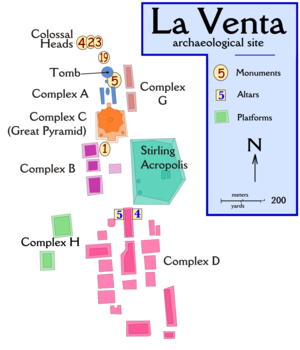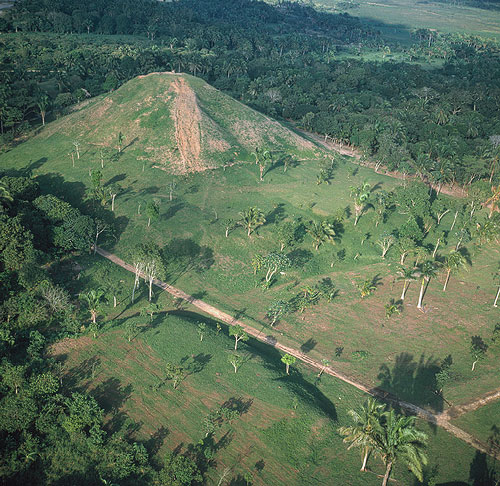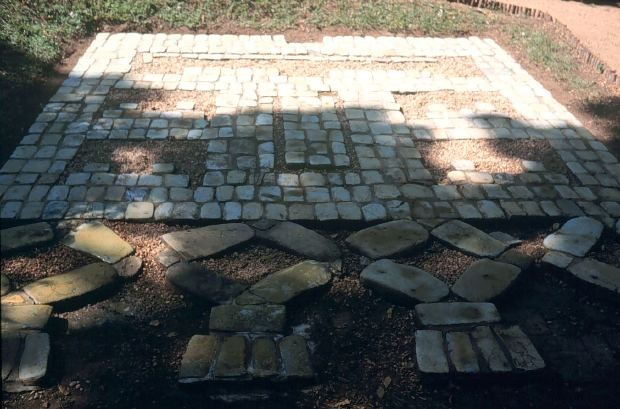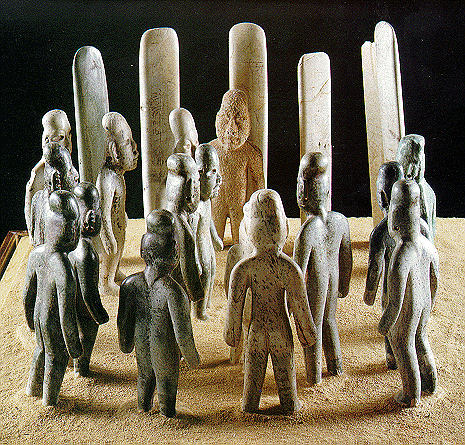
ANTH 336 New World Prehistory
Dr. Darlene Applegate
Fall 2006
Mesoamerica Culture
Area
Olmec Civilization
Many
archaeologists refer to this archaeological culture as the "Mother
Culture" of Mesoamerica,
because many distinctive features of Mesoamerica (e.g., iconography,
trade networks, ceremonial centers, monumental public architecture,
religion) are first evidenced with the Olmec. See the textbook for
alternative opinions.
TIME PERIOD
Formative (Pre-Classic) Period to early Classic Period
circa 1250 - 100 BC
LOCATION
Heartland
along Gulf Coast of Mexico
present-day Mexican states of Veracruz and Tabasco
lowland tropical rain forests
very swampy
Sphere of Influence
throughout rest of Mesoamerica,
including the Valley of Mexico,
the Valley of Oaxaca, and the Guatemala highlands
sphere of influence reflects exchange networks, military expansion,
and/or population dispersal
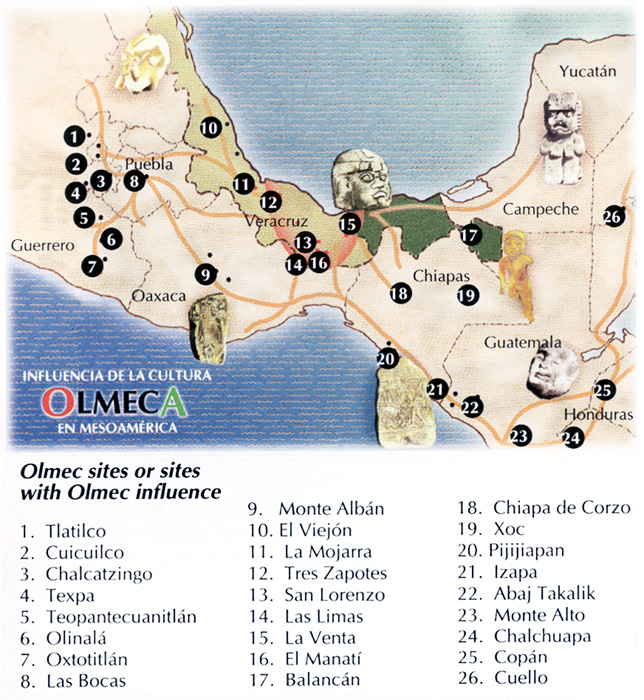
Map Showing Olmec Heartland (Tan Shading), Major Heartland Sites, and
Other Sites Exhibiting Olmec Influence.
http://www.latinamericanstudies.org/olmecs.htm
ORIGINS
probably developed from previous indigenous populations
some archaeologists hypothesized that Olmec originated from migrations
of non-indigenous peoples from other parts of the world, such as China
(Shang dynasty), South America (Peruvian Andes), or Africa (west Africa)
SUBSISTENCE
probably were agriculturalists but little direct botanical evidence
evidence of farming includes food production tools and relic raised
fields
farming probably supplemented by hunting (deer,
musk turtle), gathering, and fishing (snook)
DIAGNOSTIC ARTIFACTS
colossal heads of basalt
a total of 17 have been found to date
at four Olmec sites
carved from basalt, a volcanic rock, quarried in the Tuxtlas Mountains
of Veracruz (Gulf Coast)
sizes range from five to ten feet tall and about 20 tons each
diagnostic features include pupil-less eyes, broad nose, fleshy
downturned lips, and head gear ("helmets")
may represent ball players or rulers
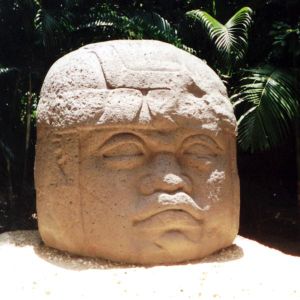
One of Four Colossal Heads from La Venta,
Mexico.
http://en.wikipedia.org/wiki/Olmec
sculpted stone altars
most are manufactured from basalt
most have been recovered from ceremonial complexes
may have been used as seating for rulers during rituals
often carved with anthropomorphic images, including seated adults
sometimes holding children or deities
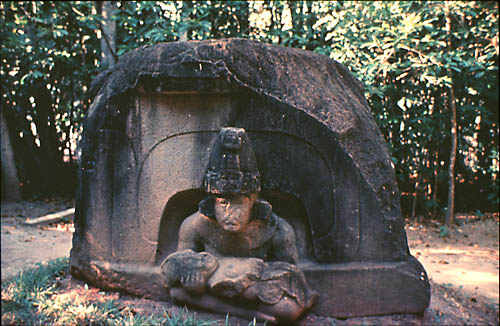
Basalt Altar from La Venta, Mexico Showing a Ruler Holding
a Diety at a Cave Entrance.
http://aal.ucsd.edu/reserves/vis126an/midterm/208240.jpg
SETTLEMENT STRATEGY
little research on settlement strategy
settlement pattern includes habitation sites located near rivers, on
islands in rivers or swamps, near raw material sources, or near trade
routes
settlement system includes ceremonial complexes surrounded by farming
hamlets
ceremonial complexes often oriented on north-south axis
SITES
Heartland Ceremonial Complexes
San Lorenzo
one of the earliest Olmec ceremonial
centers
most significant occupations occurred between about 1200-900 BC, when
the population probably numbered several thousand
unlike most other Olmec sites, San Lorenzo was not in the swamps but in
a drier area where the ground level was built up with millions of cubic
meters of soil
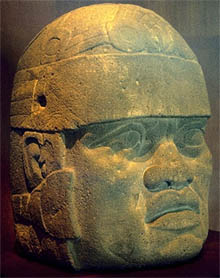
One of Ten Colossal Heads from the
Olmec Site of San Lorenzo, Mexico.
http://members.tripod.com/~kon_artz/cultures/bighead5.jpg
La Venta
one of the most famous Olmec ceremonial
centers, with the most intensive occupations between 900-400 BC
located on an island in a swamp
the ceremonial complex is oriented 8 degrees from a north-south axis
most public architecture is of clay, as few sources of building stone
were found nearby
the Great Pyramid is earthen and once had four stepped sides
Complex A contained dozens of buried offerings of greenstones,
including one pit with 50 tons of greenstone pavements
Tres Zapotes
the third of the three main Olmec
ceremonial centers
the site was occupied primarily between 900-400 BC
monumental public architecture include four groups of earthen
mounds/pyramids and plazas
two colossal heads were recovered here;
the first discovery of this artifact type was made at Tres Zapotes
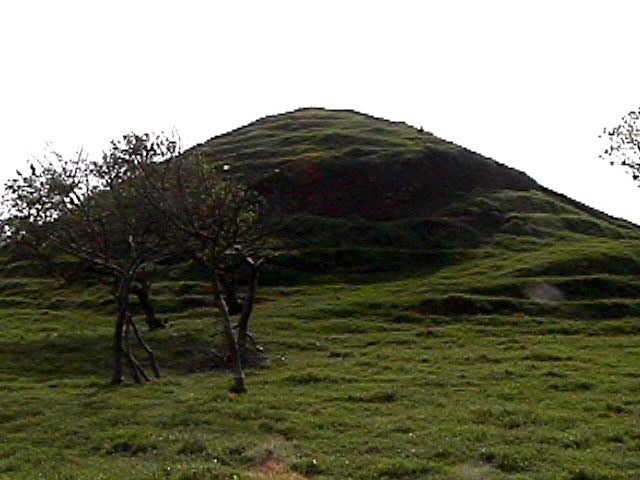
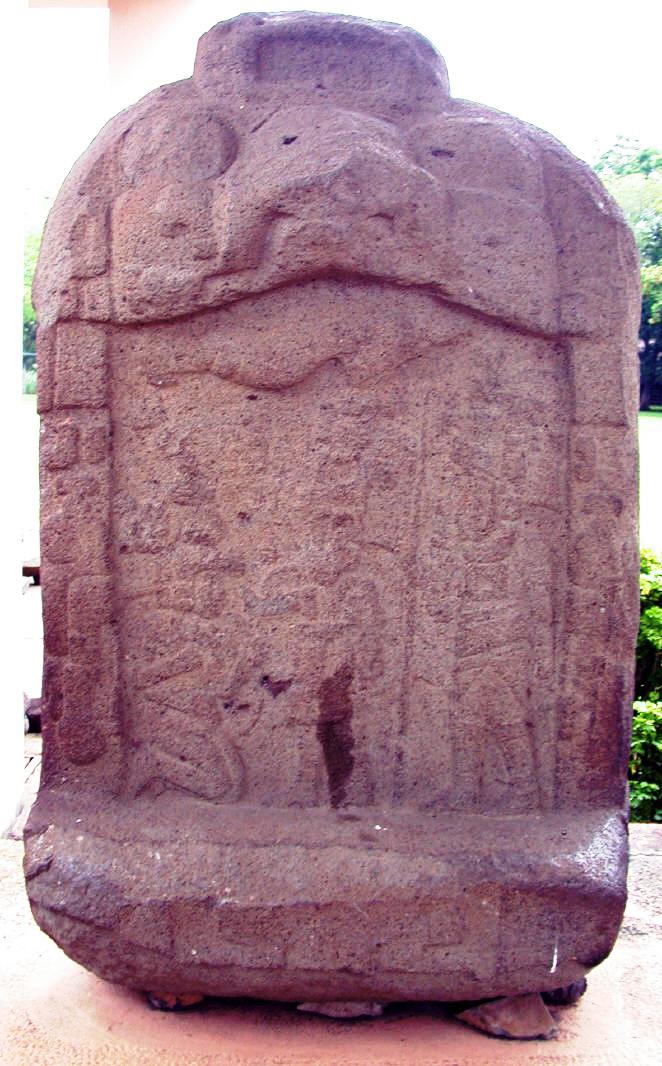
(Left) One of the Earthen Mounds/Pyramids at Tres Zapotes, Mexico.
(Right) "Initiation Stela" Recovered from Tres Zapotes.
http://www.ancientcumorah.com/Photos.html
http://www.latinamericanstudies.org/olmec-celts.htm
other sites in the heartland include Potero Nuevo, Rio Chiquito, Rancho
la Corbata, and Laguna de los Cerros
Outlier Sites Showing Olmec Influences
Tlapacoya
Tlatilco
Las Bocas
Gualupita
Chalcatzingo
Monte Alban
Izapa
Piedra Parada
POLITICAL ORGANIZATION
little evidence, but likely a theocracy
DECLINE
possible factors are environmental stress, collapse of trade
relations, and invasion
Return to New
World Prehistory Home Page
Visit the Western Kentucky University
Home
Page, Western Online
Page composed by Darlene Applegate, darlene.applegate@wku.edu
Last updated on November 10, 2006
All contents copyright (c), 20064. Western Kentucky
University.






